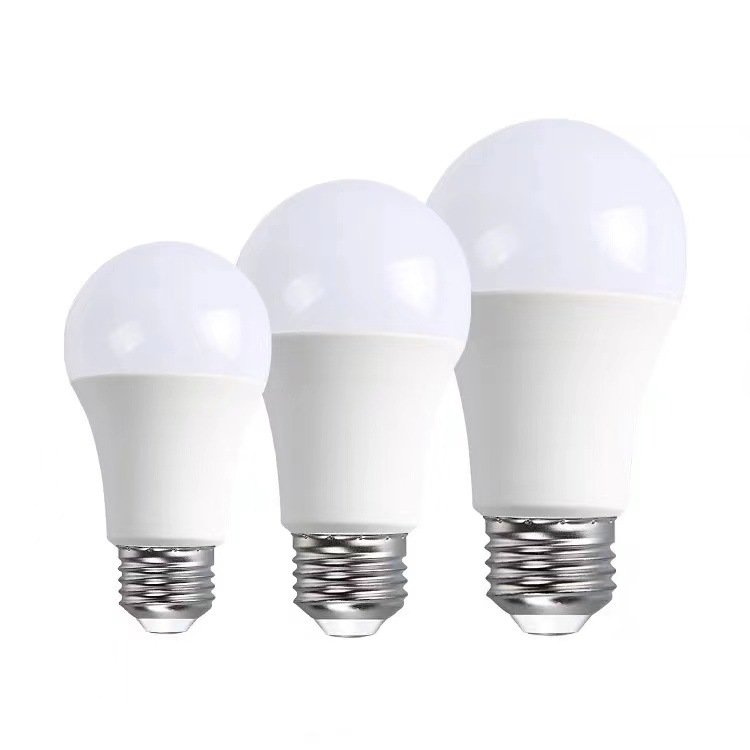When you walk into a store to buy a light bulb, you might see labels like “60W equivalent” on LED bulbs. But what does that mean? If you’re used to the old incandescent bulbs, this can be a bit confusing. Don’t worry—this blog will explain everything in simple terms so you can understand what “60W equivalent” really means and why it matters.

What is a Watt (W)?
First, let’s talk about watts. A watt (W) is a unit of power. It tells you how much energy a device uses. For example, a 60W incandescent bulb uses 60 watts of electricity to produce light. The higher the wattage, the more energy the bulb consumes.
But here’s the thing: watts don’t actually measure how bright a bulb is. They just tell you how much energy it uses. Brightness is measured in lumens (lm), which we’ll talk about later.
Why Are We Talking About LED Bulbs?
You’ve probably heard that LED bulbs are better than the old incandescent bulbs. That’s because LEDs (Light Emitting Diodes) are much more energy-efficient. They use less electricity to produce the same amount of light. This means you save money on your energy bill and help the environment by using less power.
But since people are used to thinking about brightness in terms of watts (like a 60W bulb), manufacturers came up with a way to make it easier to switch to LEDs. They label LED bulbs with their “equivalent” wattage. So, when you see “60W equivalent” on an LED bulb, it means the bulb gives off the same amount of light as a 60W incandescent bulb, but it uses way less energy.
How Many Watts Does an LED Bulb Use to Replace a 60W Incandescent Bulb?
A 60W incandescent bulb uses, well, 60 watts of power. But an LED bulb that produces the same amount of light only uses about 8 to 12 watts. That’s a huge difference! For example, a 10W LED bulb can give you the same brightness as a 60W incandescent bulb. This is why LEDs are so much more efficient.
What About Lumens?
Now, let’s talk about lumens. Lumens measure how much light a bulb produces. The more lumens, the brighter the light. A 60W incandescent bulb produces about 800 lumens of light. So, when you’re looking for an LED bulb to replace your 60W incandescent bulb, you’ll want one that also produces around 800 lumens.
Here’s a quick guide to help you understand the relationship between watts and lumens:
- 40W incandescent bulb = about 450 lumens=5-7W Led Bulb
- 60W incandescent bulb = about 800 lumens=9-10W Led Bulb
- 75W incandescent bulb = about 1100 lumens=12-13W Led Bulb
- 100W incandescent bulb = about 1600 lumens=15-18W Led Bulb
When you’re shopping for LED bulbs, look at the lumens instead of the watts to know how bright the bulb will be. The “60W equivalent” label is just there to help you make the switch easier.
Why Should You Switch to LED Bulbs?
There are so many reasons to switch to LED bulbs. Here are just a few:
- Energy Efficiency: As we’ve already talked about, LED bulbs use much less energy than incandescent bulbs. This means lower electricity bills for you.
- Longer Lifespan: LED bulbs last much longer than incandescent bulbs. A typical LED bulb can last 15,000 to 25,000 hours, while an incandescent bulb might only last 1,000 hours. That means you’ll replace your bulbs a lot less often.
- Environmentally Friendly: Because LED bulbs use less energy and last longer, they’re better for the environment. You’ll reduce your carbon footprint by using less electricity and throwing away fewer bulbs.
- Less Heat: Incandescent bulbs waste a lot of energy by producing heat. LED bulbs stay cool, which makes them safer to use and helps reduce the load on your air conditioning in the summer.
- More Options: LED bulbs come in a variety of colors and styles. You can choose from warm white, cool white, daylight, and even colored bulbs. Plus, they’re available in different shapes and sizes to fit any fixture.
How to Choose the Right LED Bulb
Now that you know what “60W equivalent” means, how do you choose the right LED bulb for your needs? Here are a few tips:
- Check the Lumens: Look for a bulb that produces around 800 lumens if you want to replace a 60W incandescent bulb.
- Choose the Right Color Temperature: LED bulbs come in different color temperatures, measured in Kelvins (K). Lower Kelvins (around 2700K) give you a warm, cozy light similar to incandescent bulbs. Higher Kelvins (5000K or more) give you a cooler, brighter light that’s more like daylight.
- Consider the Bulb Shape and Size: Make sure the bulb fits your fixture. LED bulbs come in standard shapes like A19 (the classic bulb shape), as well as smaller or larger sizes for different lamps and fixtures.
- Look for Dimmable Options: If you have a dimmer switch, make sure to buy a dimmable LED bulb. Not all LED bulbs work with dimmer switches, so check the packaging.
- Check the Energy Star Label: If you want to make sure you’re getting a high-quality, energy-efficient bulb, look for the Energy Star label. This means the bulb meets strict efficiency and performance standards.

Conclusion
So, what is 60W equivalent in an LED bulb? It’s an LED bulb that produces the same amount of light (around 800 lumens) as a 60W incandescent bulb, but it only uses about 8 to 12 watts of power. This makes LED bulbs a smarter, more energy-efficient choice for your home.
Switching to LED bulbs is a simple change that can save you money, reduce your energy use, and help the environment. Plus, with so many options available, you can find the perfect LED bulb to suit your needs. So next time you’re shopping for light bulbs, don’t be confused by the “60W equivalent” label—now you know exactly what it means!
